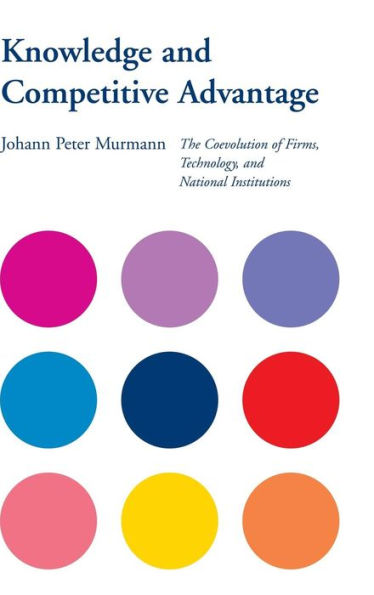'Murmann's book all in all is a masterpiece of historical sociology. It achieves both completeness and particularity. Š For business historians, Murmann's work demonstrates the exciting potential of an organized and systematic effort, creatively presented, to make industrial history meaningful to managers, and other historians, without sacrificing richness of detail." Enterprise and Society
"Rarely has any student of economic change combined impeccable scholarship, sophisticated theory, challenging ideas, and engaging narrative in the elegant manner of Johann Peter Murmann. Readers who have no interest whatsoever in industrial chemistry will nevertheless learn a great deal about economic processes from Murmann's original, ambitious work." Charles Tilly, Joseph L. Buttenwieser Professor of Social Science, Columbia University
"If evolutionary models are to be successful at all in the social sciences, it is in enhancing our understanding of technological and economic performance in the past. In this pioneering work, Johann Peter Murmann does exactly that, and immediately establishes himself as one of the most innovative and bold scholars in the field. Using evolutionary theory and management science, this book sheds important light on the nineteenth-century chemical industry. This is one of the most methodologically original books in interdisciplinary history to come out in recent years." Joel Mokyr, Robert H. Strotz Professor of Arts and Sciences and Professor of Economics and History, Northwestern University
"Murmann's study of the synthetic dye industry puts one in mind of some grand painting by an Old Master: not only is the main scene imposingly displayed, but fascinating, well-rendered details are to be found in every corner and shadow. His account of the early decades of the industry reveals the remarkable complexity of the social processes of industrial development. At the same time, his coevolutionary perspective transcends the details, organizes this complex story in a compelling fashion and leads the reader to a deeper understanding." Sidney G. Winter, Deloitte and Touche Professor of Management, The Wharton School, University of Pennsylvania
"Darwin not only set out his theory of biological evolution at some length but also provided as much empirical backing as was available at the time. In this remarkable book Johannn Peter Murmann sets out a general analysis of coevolution and provides a detailed example to back it up how quickly the discovery of synthetic dyes by an academic scientist gave rise to an industry that in turn influenced the development of academic science. Murmann provides a well-developed theory and evidence to support it. Who could ask for more?" David L. Hull, Professor of Philosophy (Emeritus), Northwestern University
"Johann Peter Murmann's book is a major contribution to our understanding of the interrelations between technological change and industry evolution. This comparative study of the emergence of the synthetic dye industry wonderfully illustrates how differences in public policy, university traditions, and industry context affect both technical as well as industrial change. Murmann's book will have a major impact on coevolutionary theory as well as industrial policy. It is a book for researchers as well as for policy makers." Michael Tushman, Paul R. Lawrence, Class of 1942 Professor, Harvard Business School
"Murmann's admirable book provides the most persuasive account, to date, for Germany's early leadership and long dominance of the synthetic dye industry after the momentous, serendipitous scientific discovery by a young Englishman in 1856. It is an account that employs a sharply focused, coevolutionary lens upon the differing historical experiences of Germany, Great Britain and the United States. The book calls attention to the ways in which the earlier development paths of the German states had equipped them, much more effectively than their potential competitors, to exploit the specialized research tools of synthetic organic chemistry, upon which commercial success was to become heavily dependent." Nathan Rosenberg, Professor of Economics (Emeritus), Stanford University
"Murmann's book will interest and stimulate the thinking of anyone involved in management in a technology-based operation. I also recommend it to policymakers in government and the host of non-governmental organizations that seek to influence international policy. As Murmann hopes, it should also encourage additional research." Chemical & Engineering News
"Johann Peter Murmann's book shows convincingly that competitive advantage, especially in the knowledge-intensive industries, is firmly rooted in national institutions. Blending quantitative analysis and case study evidence over a period of decades, he makes a major contribution to the fields of strategic management, organizational theory, and technological innovation." Mauro F. Guillen, Dr. Felix Sandman Professor of International Management, The Wharton School, University of Pennsylvania
"Ambitious.... Murmann should be given credit for his masterful synthesis both of scholarship on the emergence of the organic chemicals industry and of a wide array of—frequently theoretical—literature from management studies, economics, and business, economic, and technological history." Technology and Culture, Ray Stokes, director of the Centre for Business History, University of Glasgow
"Murmann's book is a convincing comparative economic and business history that is likely to inspire further empirical studies." - Christian Kleinschmidt, Ruhr University




